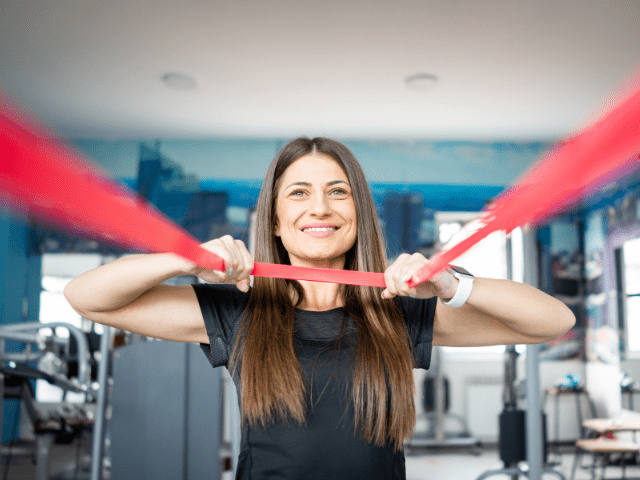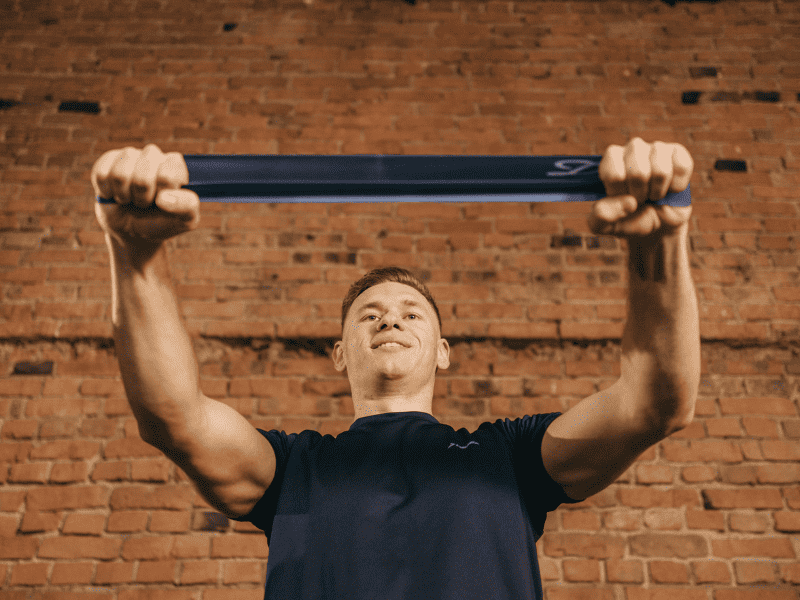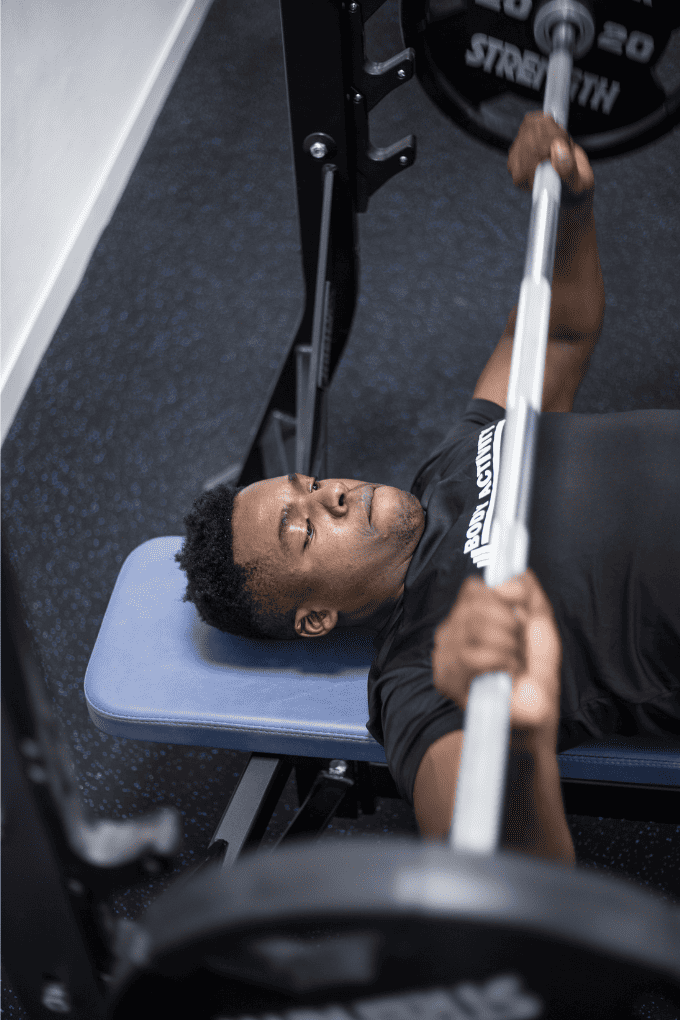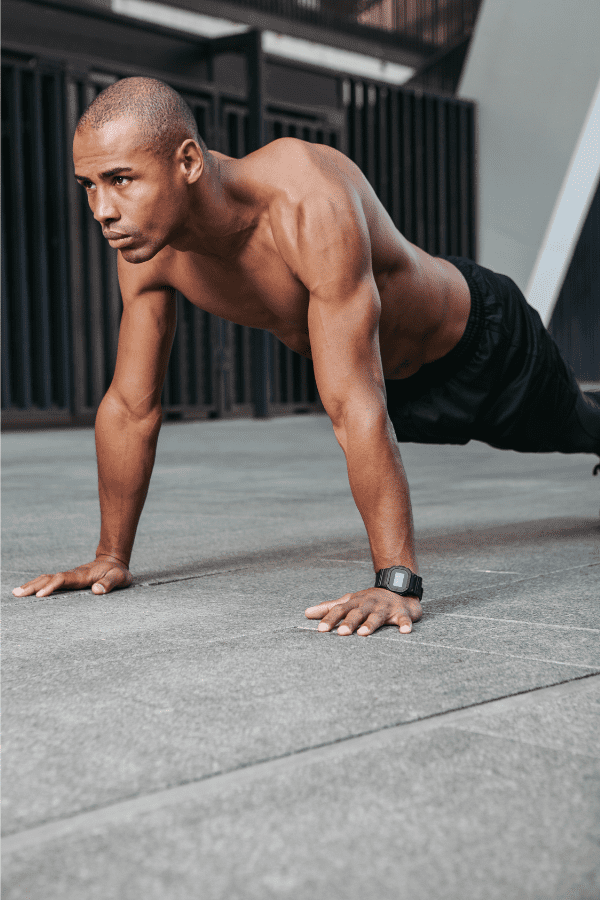Cable Face Pulls (How To, Muscles Worked, Benefits)
Cable face pulls are a popular exercise that targets the muscles of the upper back and shoulders.
This exercise involves pulling a weight towards the face using a cable machine, with the hands positioned wider apart than in other similar exercises like cable upright rows.
Face pulls are often used as a corrective exercise to improve posture and address imbalances in the upper body, as well as to build strength and muscular endurance.
In this article, I will discuss the benefits of cable face pulls, how to properly perform the exercise, and some variations to try.
How To Do Cable Face Pulls
Equipment Needed
- Cable Machine
- Rope Attachment (can also be done with a straight bar attachment)
Muscles Worked
- Trapezius and Shoulders (especially the rear delt)
Step-by-Step Instructions
- To begin, adjust the cable machine to a high setting and attach a rope attachment to the pulley.
- Stand facing the cable machine with your feet shoulder-width apart and grasp the rope with both hands, using a neutral grip (palms facing each other).
- Extend your arms in front of you so that the rope is taut, and step back slightly to create tension in the cable.
- Engage your core and maintain a neutral spine as you pull the rope towards your face, keeping your elbows wide and your hands level with your ears.
- As you pull the rope towards your face, squeeze your shoulder blades together and imagine that you are trying to pinch a quarter between your shoulder blades.
- Hold the contraction for a moment, then slowly release the tension in the cable and return to the starting position.
- Repeat the exercise for the desired number of repetitions.
Coaching Points
Be sure to maintain good form and avoid using momentum to swing the weight. If you find yourself rocking forward and back, lighten the weight.
Keep your chest up and avoid rounding your shoulders forward as you perform the exercise.
Focus on squeezing your shoulder blades together and engaging your upper back muscles, rather than just pulling the weight with your arms.
Experiment with different grip positions (narrow, neutral, wide) to target different muscles in your upper back and shoulders.
How Many Reps?
Cable Face Pulls is an exercise that I program either as part of a warm-up or as a rear-delt finisher late in a workout. Either way, I typically use 2 to 3 sets of 10 to 15 reps per set.
Cable Face Pull Benefits
There are several benefits to doing cable face pulls, including:
- Improved posture: Cable face pulls can help to improve posture by strengthening the muscles of the upper back and shoulders, which can help to prevent rounded shoulders and hunched posture.
- Increased upper body strength: This exercise targets the muscles of the upper back and shoulders, which can help to build strength in these areas.
- Improved shoulder mobility: By strengthening the muscles that surround the shoulder joint, cable face pulls can help to improve shoulder mobility and reduce the risk of injury.
- Enhanced muscular balance: Cable face pulls can help to address imbalances in the upper body by targeting muscles that are often overlooked in traditional chest and arm exercises.
- Reduced risk of injury: By strengthening the muscles that support the shoulder joint, cable face pulls can help to reduce the risk of common shoulder injuries like rotator cuff tears and impingement syndrome.
Cable Face Pull Variations
Band Face Pull

If you don’t have a cable machine, you can also use a resistance band to do Band Face Pulls.
Simply loop a resistance band around a squat rack about shoulder height. Grab the band, take a step away from the rack and perform face pulls just as you would with a cable machine.
Cable Face Pull Alternatives
If you don’t have a cable machine or you’re just looking to change up your workout plan a bit, here are a couple of alternatives you can try in place of Face Pulls.
Want even more options? Here are 10 Face Pull alternatives that you can choose from.
Band Pull Apart

Band Pull Aparts, also known as Band Tears, work very similarly to Cable Face Pulls, with an even easier setup.
For Band Pull Aparts, all you have to do is grab a band, hold it straight out in front of you and pull your arms straight out to the side. This movement should stretch the band and bring it toward your chest.
I love Band Tears in warm-ups as a quick and efficient shoulder warm-up.
Dumbbell Upright Row

If you don’t have a cable machine or a resistance band, Dumbbell Upright Rows are a great alternative that also focuses on the shoulders and upper trapezius.
Exercises to Superset with Face Pulls
Looking to ramp up your Face Pulls? Try using one of the following exercises to create a superset.
Bench Press

Why: Bench Press is my personal favorite, and most often used, superset to go along with Face Pulls.
Bench Press is a large compound movement that I don’t like to interfere with too much with a superset, but Face Pulls are a low enough intensity exercise to not hinder your Bench Press sets.
Push-Ups

Why: I like Push-ups as a superset to Face Pulls for all the same reasons I like Bench Press. Push-ups are just a little more beginner-friendly (and a great option if you’re limited on equipment).
Push-ups, like Bench, target the chest, shoulders, and triceps, providing a nice balance to the muscle groups worked during Face Pulls.
Want more ideas? Here are 10 of my favorite exercises to superset with Face Pulls.

Online Strength Programs
- 1-on-1 Online Coaching
- Sports Performance Programs for Football, Basketball, Soccer & More
- Programs for Former Athletes (Legends) Who Still Want to Train Like Athletes
- Programs for Adults Who Want to Get Healthy (and look great at the beach!)
- Use Code “HB10” to Get 10% Off Today
More Links and Info
If you’d like to see even more exercises for the chest, back and shoulders – check out the Upper Body Lifts section of our Exercise Library. There you’ll find dozens of upper body movements, all with detailed instructions.

